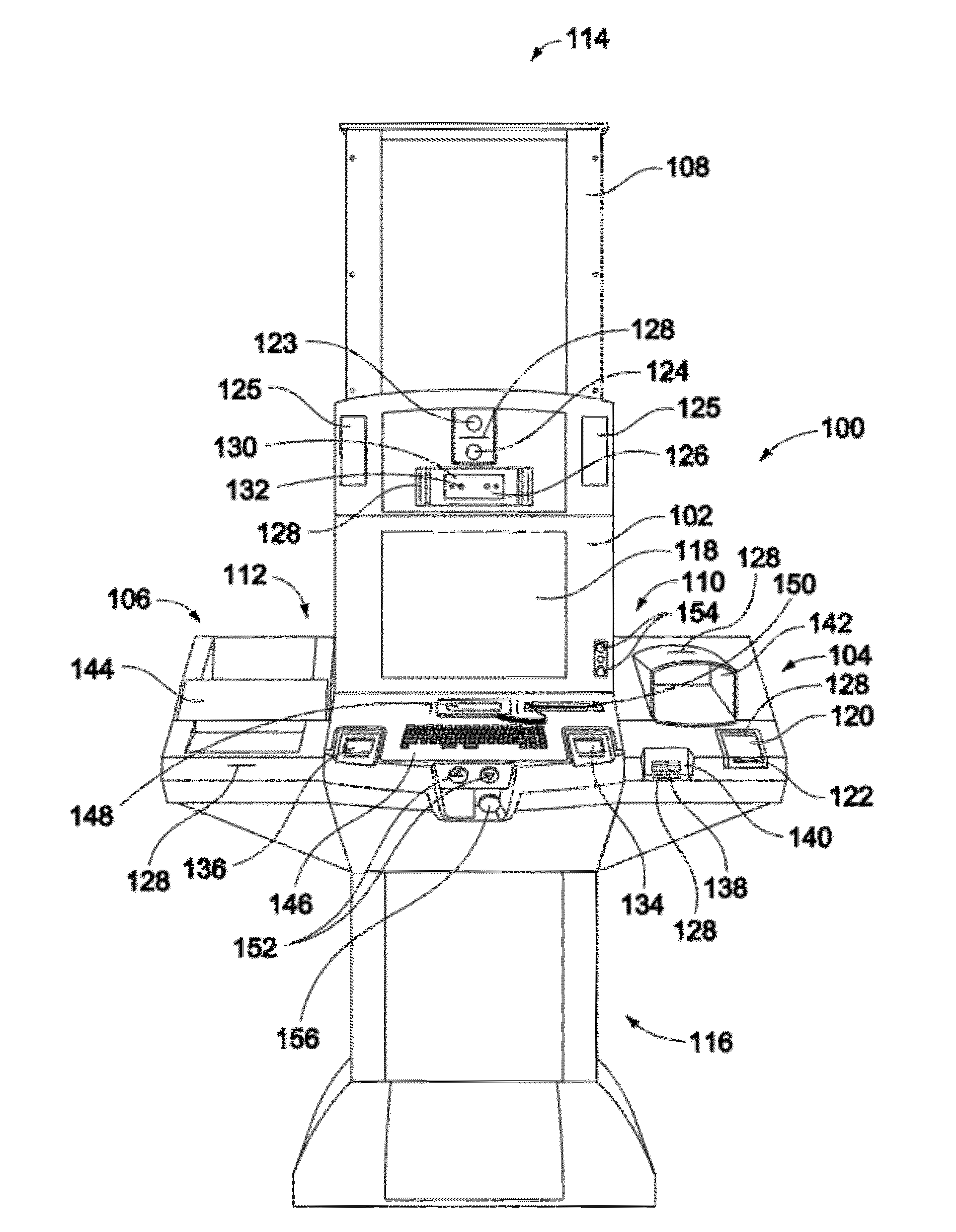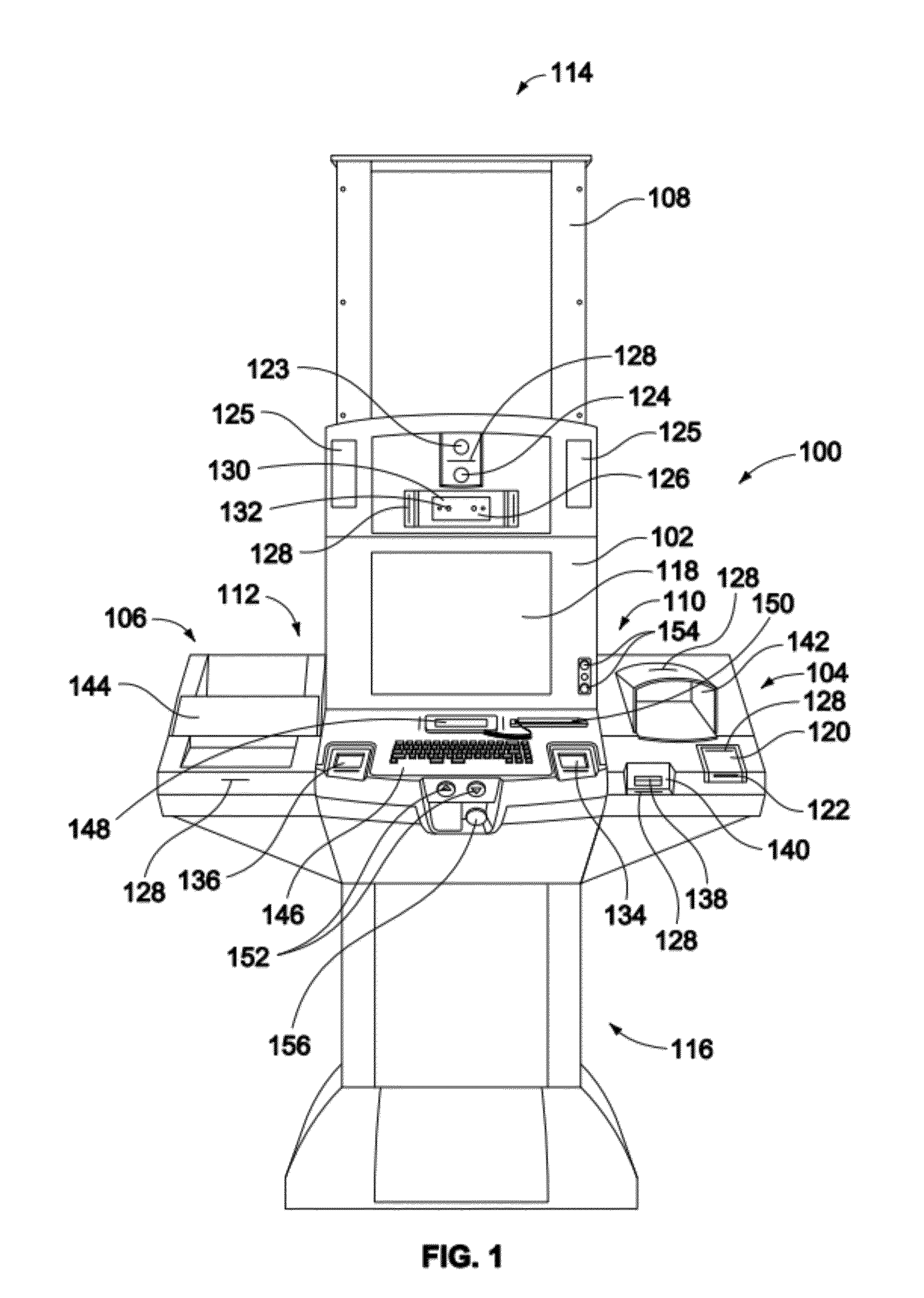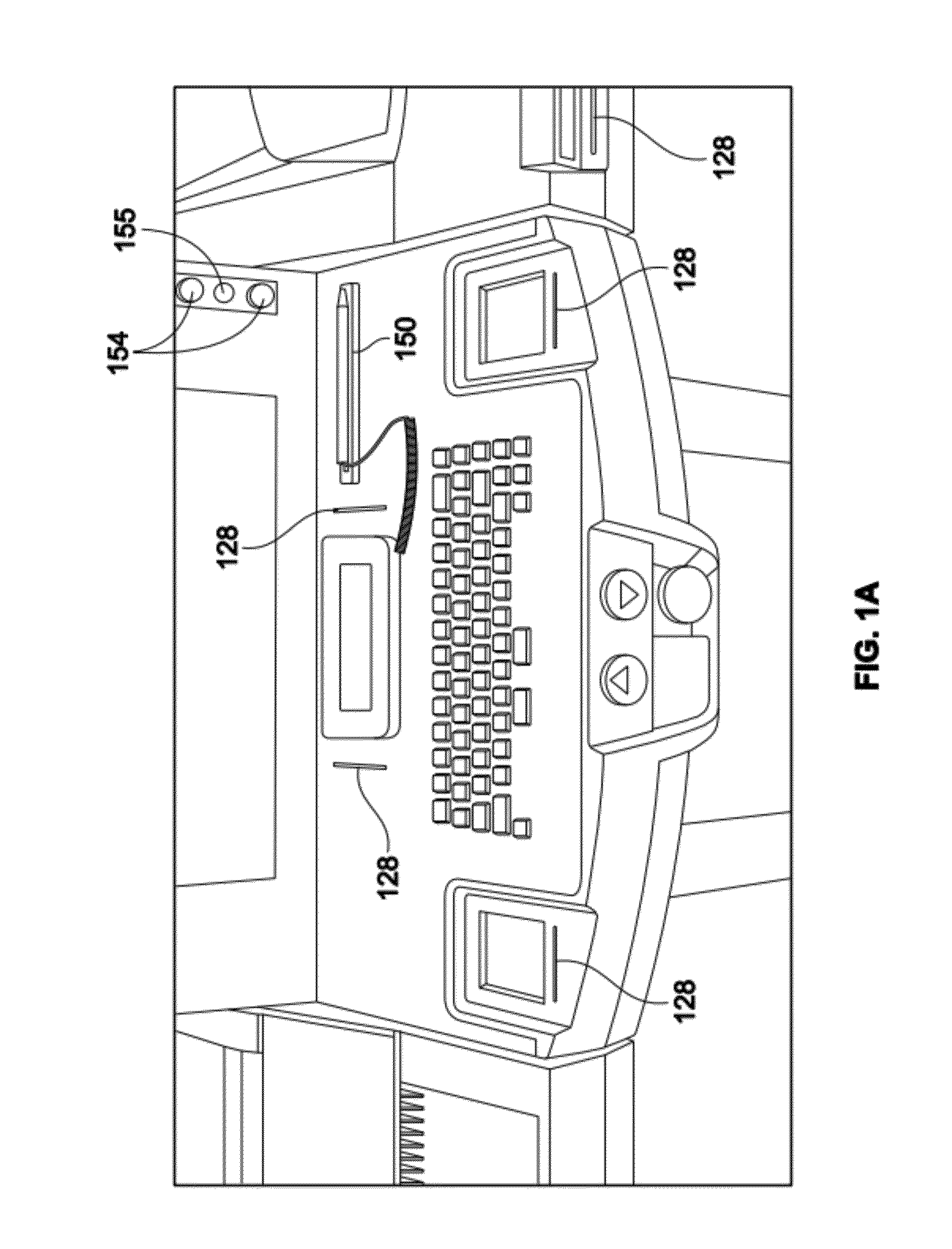Multi-biometric enrollment kiosk including biometric enrollment and verification, face recognition and fingerprint matching systems
a biometric and kiosk technology, applied in the field of biometric and identity enrollment solutions, can solve the problems of switching or fraud, the area surrounding a particular biometric system cannot be monitored remotely, and the conventional biometric system suffers from a number of problems, so as to achieve the effect of convenient transportation and installation
- Summary
- Abstract
- Description
- Claims
- Application Information
AI Technical Summary
Benefits of technology
Problems solved by technology
Method used
Image
Examples
Embodiment Construction
Multimodal Biometric Enrollment Kiosk
[0050]FIGS. 1A-E illustrates an example kiosk 100 designed according to aspects of the present invention. The kiosk 100 is designed to be a flexible, multi-application, multi-customer (i.e., government agencies) shared biometric enrollment kiosk. The kiosk 100 is designed to accommodate a range of custom configurations without impacting the core functionality and associated software. The kiosk 100 is designed for: quality biometric image capture with automated quality checking against government standards, including U.S. Government Homeland Security Presidential Directive 12 (HSPD-12) for Personal Identity Verification (PIV and PIV-I), accessibility for the disabled in accordance with government regulations, such as the Equality Act 2010 (United Kingdom) and the ADA (United States), reliability for long life in public places, self-service or local or remotely supervised operations, ease of maintenance, security, privacy, ease of use, minimum tran...
PUM
 Login to View More
Login to View More Abstract
Description
Claims
Application Information
 Login to View More
Login to View More - R&D
- Intellectual Property
- Life Sciences
- Materials
- Tech Scout
- Unparalleled Data Quality
- Higher Quality Content
- 60% Fewer Hallucinations
Browse by: Latest US Patents, China's latest patents, Technical Efficacy Thesaurus, Application Domain, Technology Topic, Popular Technical Reports.
© 2025 PatSnap. All rights reserved.Legal|Privacy policy|Modern Slavery Act Transparency Statement|Sitemap|About US| Contact US: help@patsnap.com



